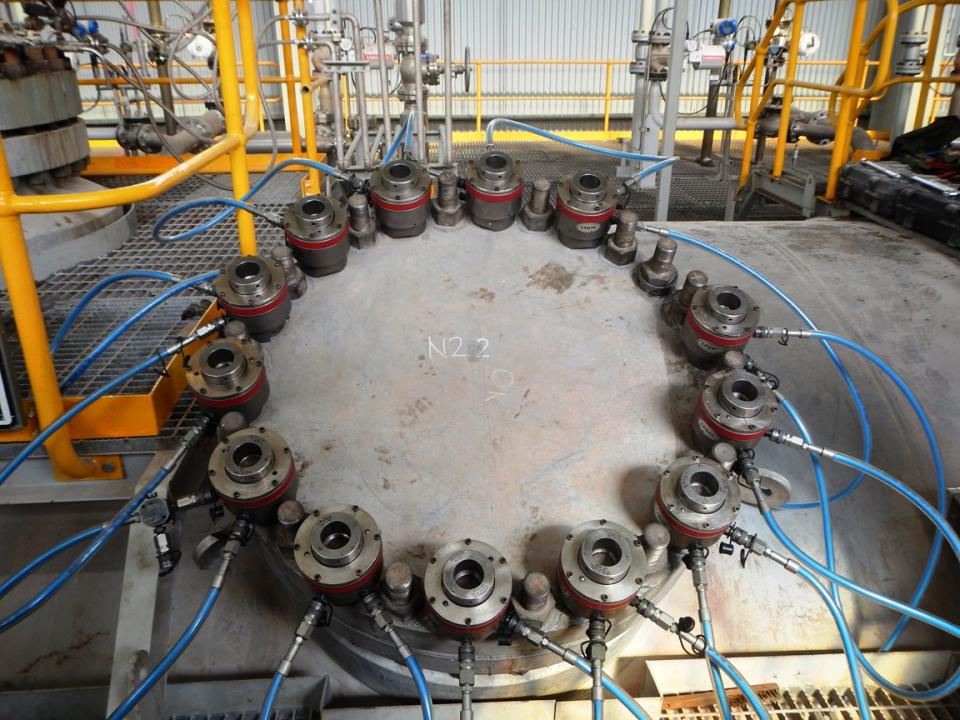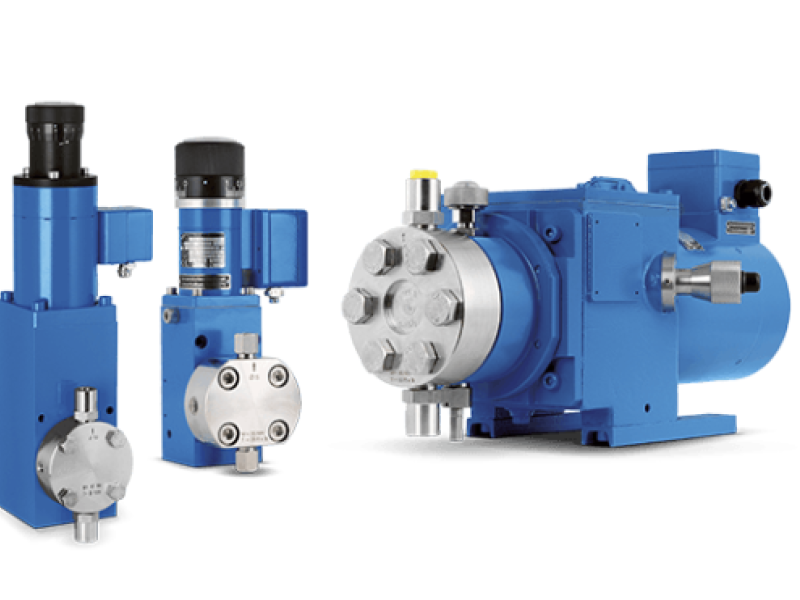Bolted flange joints on connecting pipes, valves, pumps, and other equipment are integral to flexibility when maintaining piping systems, allowing for easier disassembly and improved access to system components.
But fastening multiple bolts on one flange to the same accurate pressure is essential to ensure safe and stable flange-and-gasket combination that will not leak liquids or gases, which can range from milk, acids and food process fluids, through to highly volatile and hazardous natural gas, crude oil and refined fuels.
“The flange tightening task on larger pipelines can be multiplied many times over where you have scores of flanges to deal with safely,” says Australasian and international hydraulic fastening technology specialist, John Bucknell.
“There are more than 3.5 million km (2.2 million miles) of oil and gas pipelines in 120 countries worldwide. Plus, shorter but specialised pipelines – such as the stainless steel types widely used in food and beverage manufacturing – can be required to be fastened exactly right because of the precise pressure needed to do the job safely with various metals.”
Mr Bucknell, who is Founder and CEO of global fastening specialist company Technofast, says the task of fastening sometimes involves the laborious use of flogging spanners and torque wrenches to try to arrive at the even pressures that will both deliver safety from leakages and curtail unscheduled maintenance and downtime resulting from spillages and environmental risk.
Technofast has developed a family of hydraulically actuated fasteners (www.technofast.com) that take the speed and precision of the ubiquitous bolt fastening tasks to a higher level, he says. These families of easily handled, powerful precision tools include EziJac® bolt tensioners used on pipelines around the world, including, for example, on a metering station of a gas pipeline located on the Darling downs of Queensland, Australia.
This particular application – where bolt installation time was more than halved - previously involved the use of cassette-style torque wrenches, which were more difficult to use in the space available, very time-consuming, and created OH&S concerns with pinch points occurring during the process.
The national pipeline operator involved substituted standard B3S EziJac Bolt Tensioners, which simultaneously tension multiple bolts to the exact load required. On this job, a series of B3S tensioners was attached to 50 per cent of the bolts around the circumference of the flange, then remotely actuated to stretch them to create the exact even tension around the flange required for enduring service and safety. The bolts in between the hydraulically tensioned fasteners were then easily tightened to maintain the same pressure, with minimum physical exertion.
Mr Bucknell said the safe, easy-to-operate, and extremely accurate hydraulic bolt tensioners were then released, by manual return of their hydraulic force, after the equal joint pressure required had been achieved. The same process could be repeated on the remaining bolts, where required for optimum fastening, provided there was sufficient room remaining between the fastened bolts. Alternatively, the EziJacs could be placed on the other side of the flange, where sufficient bolt length allowed this in circumstances where fastening of 100 per cent of the bolts was required. Usually, hydraulic fastening of 50 per cent of flange bolts provides outstanding safety and joint stability.
In the case of the Darling Downs metering station, the installation time taken by two personnel using EziJacs was cut from two or three hours using the previous equipment, to one hour. Further benefits reported by operations staff of the pipeline owner included:
- Easy installation and handling
- Safe tensioning of the fasteners without operators needing to be in the area
- Minimal physical exertion – the site supervisor was very impressed at the speed with which the entire flange was tensioned, and the advanced accuracy achieved, said Mr Bucknell.
Method of use
EziJacs use hydraulic pressure to tension the bolt to the exact load required. Once the bolt has been tensioned, the nut is wound down the thread to retain the load. The EziJac is then de-pressurised, released, and is ready to use again.






